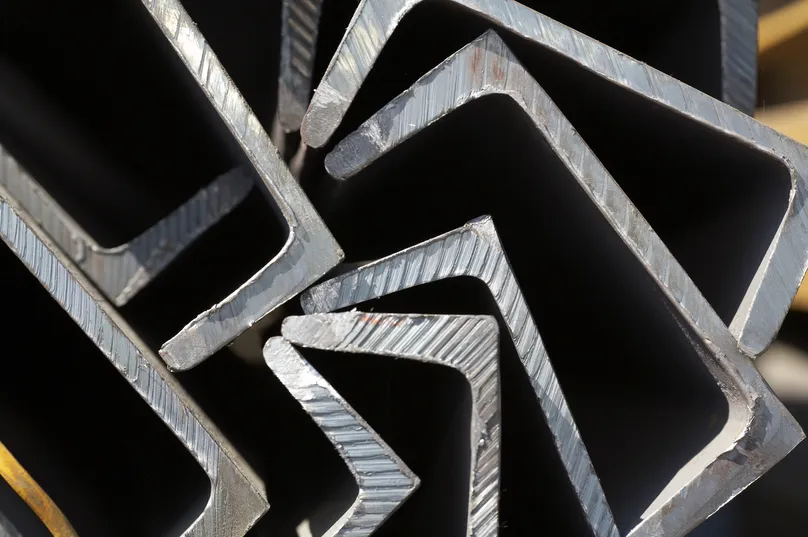Recycled/reused/low carbon steel
Conventional primary steel production relies heavily on fossil fuel energy sources which emit significant amounts of CO2. Recycled, reused, and low carbon steel refer to types of steel produced with a focus on environmental sustainability by reducing raw material needs (i.e. iron ore) and lowering carbon emissions.
How is it processed?
The typical processes of manufacturing recycled, reuse, and low carbon steel are as follows:
- recycled steel: scrap steel is collected, sorted, and melted in electric arc furnaces (EAF) to eliminate impurities, producing molten steel that is cast into new forms
- reused steel: steel components from dismantled structures are inspected, cleaned, and reused in new projects without further processing (i.e. re-melting), thereby saving energy and emissions
- low carbon steel: processed primarily in EAF, often powered by renewable energy sources, and may involve carbon capture technologies to reduce emissions. The process may incorporate recycled steel to further decrease its environmental impact
Environmental, health, and safety
The Occupational Health and Safety (OHS) challenges related to recycled, reused and low carbon steel include:
- recycled steel: scrap steel may contain hazardous substances (e.g. lead or asbestos), requiring proper handling to prevent contamination and exposure
- reuse steel: older steel components can contain toxic substances (e.g. lead paint), and must be inspected for structural integrity to ensure safe reuse
- low carbon steel: safety protocols for workers may need to be updated to accommodate new technologies (e.g. renewable energy and carbon capture facilities) used in low carbon steel production
Applications
Recycled, reused and low carbon steel can be used in a wide range of infrastructure applications, including but not limited to:
- structural frameworks
- reinforcement
- rail track
- roofing
- steel fabrication
- piping
Specifications
In Western Australia, the use of steel in infrastructure is governed by a combination of national and State-specific standards and specifications. Recycled, reused and low carbon steel must meet the requirements specified in the relevant standards or specifications for use in construction, such as:
- Main Roads Western Australia Specification 830 for Structural Steelwork
- Australian Standards AS 4100 for Steel Structures
- Public Transport Authority 8880-450-031: Specification - Steel Durability
- AS/NZS 5131 for Structure Steelwork, Fabrication and Erection
Benefits and challenges
Recycled, reused and low carbon steel are increasingly used in Australian construction, supporting a circular economy by reducing carbon emissions, conserving resources, and lowering energy consumption compared to primary steel production.
Challenges may include:
- quality control: ensuring recycled and reused steel meet structural and durability standards
- supply chain limitations: high-quality scrap steel availability varies, impacting the feasibility of large-scale recycled steel use
- higher production costs for low carbon steel due to adoption of newer and more costly technologies
Previous use in Western Australia
Western Australia is moving toward more sustainable practices in the steel industry, notably with the development of a green steel mill project in Collie. Set to launch in 2026, this mill will use renewable energy to produce low-carbon or "green" steel from locally sourced scrap, promoting recycling and significantly reducing emissions.

References
- BHP 2024, Pathways to decarbonization episode two: steelmaking technology, viewed 30 October 2024, <https://www.bhp.com/news/bhp-insights/2020/11/pathways-to-decarbonisation-episode-two-steelmaking-technology>
- Australian Steel Institute 2024, Reduce, reuse and recycle, viewed 30 October 2024, <https://www.steel.org.au/what-we-do/focus-areas/sustainability/reduce,-reuse-and-recycle/>.
- ArcelorMittal 2020, Climate action in Europe, viewed October 2024, <https://corporate-media.arcelormittal.com/media/yw1gnzfo/climate-action-in-europe.pdf>.
- MECLA 2022, Low embodied carbon steel, viewed 30 October 2024, <https://mecla.org.au/wp-content/uploads/2022/07/LowEmbodiedCarbonSteel_brochure.pdf>.
- Green Steel 2024, Major milestone reached for Western Australia’s first steel mill, viewed 30 October 2024, <https://www.greensteelwa.com.au/uncategorized/major-milestone-reached-for-western-australias-first-steel-mill/>.